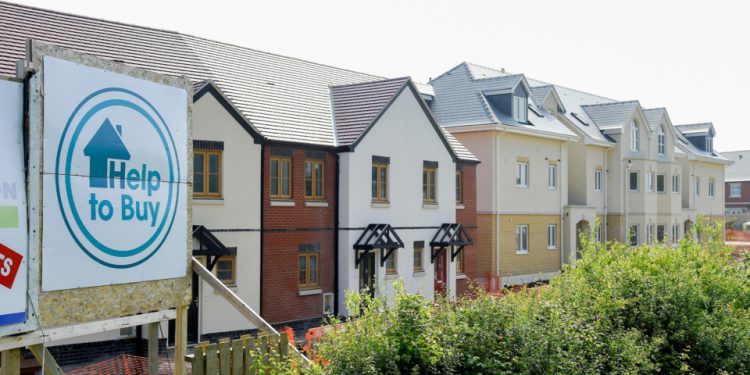New Help to Buy scheme opens for first-time buyers: how will it work?


First-time buyers in England can use for the next iteration of the Help to Buy equity loan scheme from today.
Buyers who reserve homes now will be able to move in on 1 April, the scheme’s official launch date.
Here, Which? explains why Help to Buy is changing and whether the new rules will be great news for first-time buyers.
What is Assistance to Buy?
The government launched the Help to Buy equity loan scheme in April 2021. It allowed first-time buyers and residential movers in England to buy new-build homes priced up to lb600,000 having a 5% deposit.
Buyers could benefit from a 20% equity loan from the government (40% in London) and get a mortgage for the remaining 75%. The loan was provided interest-free for that first 5 years.
As of June this season, 278,639 homes have been bought using equity loans, with 82% of purchases produced by first-time buyers.
What’s changing with Help to Buy?
From 1 April, Help to Buy will only be available to first-time buyers, and regional price caps will be introduced, limiting how much developers can charge for houses sold underneath the scheme.
The price caps were set at 1.Five times the average first-time buyer price in each region once the scheme was first announced in Autumn 2021. The caps are as follows:
| Region | Maximum price |
| North East | lb186,100 |
| North West | lb224,400 |
| Yorkshire & The Humber | lb228,100 |
| West Midlands | lb255,600 |
| East Midlands | lb261,900 |
| South West | lb349,000 |
| East of England | lb407,400 |
| South East | lb437,600 |
| London | lb600,000 |
From today, first-time buyers can use for properties sold under the new scheme. People who reserve can relocate once the scheme officially opens on 1 April. The new form of Assistance to Buy will run until 31 March 2023.
Why is Help to Buy changing?
The Assistance to Buy premium
Help to Buy continues to be very popular with first-time buyers, but developers have faced accusations of inflating the price of new-build homes, inducing the government getting price caps.
Exclusive Which? research earlier this year discovered that one in seven homes purchased using Help to Buy was resold baffled, despite average house prices rising significantly throughout the same period. This amounted to more than 5,000 Help to Buy homes falling in value.
Helping the incorrect people
The move to restrict the scheme to first-time buyers uses criticism that lots of people who used Assistance to Buy might have owned by buy a home around the open market and therefore didn’t require a 20% loan from the government.
The government’s newest data implies that around 13,000 individuals with annual household salary of more than lb100,000 have used Help to Buy to date.
Will developers make use of the new scheme?
The price caps are now being introduced to limit the cost of Assistance to Buy homes, but it’s entirely possible that the smaller margins on offer may put developers off, resulting in fewer properties being sold underneath the scheme.
The government has faced questions over its proceed to base the price caps on house prices in 2021 rather than the scheme’s launch date.
A report by the estate agency Hamptons International last year claimed the caps were lacking within the North of England. It said this might mean developers might not be in a position to build in certain areas or will need to build flats rather than houses.
How to apply for Help to Buy
The government says first-time buyers considering trying to get Help to Buy should ensure they meet the following criteria:
- You have a deposit with a minimum of 5% from the property’s value
- You can afford to pay a charge as high as lb500 to order the property
- You are able to afford to pay for other costs of moving, such as stamp duty, mortgage fees and attorney's fees.
Buyers should follow these four steps to use:
1. Find a home and apply
Find a suitable Assistance to Buy property. Searching for Help to Buy homes online or through developers, who will display the scheme’s logo on their own adverts.
Once you’ve visited the show home and chosen your home, you’ll need to pay a charge (capped at lb500) to order it. This is refunded if you’re not approved to have an equity loan.
You’ll now have to complete a Property Information Form to apply. You’ll have to prove details just like your income, deposit and also the mortgage you intend to take out. Don’t formally make an application for your mortgage yet.
2. Get ‘Authority to Proceed’
The Help to Buy Agent will make sure you’re entitled to the scheme and assess your affordability. In case your application is approved, you’ll get Authority to Proceed (ATP), which is valid for three months.
You can now formally make an application for your mortgage and appoint your conveyancer.
3. Mortgage offer and exchange
Your conveyancer will complete all of the legal particulars, including checking the home sale contract and making sure your mortgage offer adheres towards the rules and can set an exchange date with the Help to Buy Agent.
Upon exchange of contracts, you’ll be legally bound to buy the home by an agreed date (the completion date). You’ll need to ensure this date is before your mortgage offer expires. At this time, you pay your 5% deposit.
Once you’ve exchanged contracts you can visit your brand-new the place to find confirm any last-minute details or changes.
4. Completion
On completion, your mortgage company will release the rest of the funds, enabling you to purchase the home. The government will pay your equity loan to the developer and you’ll legally own the property.
Alternatives to assist to Buy
Help to purchase continues to be extremely popular with first-time buyers during the last seven years, but it's by no means the only option available.
When weighing up if the scheme fits your needs, consider these alternatives
90% mortgage
It’s nigh-on impossible to get a home loan with a 5% deposit right now, but a steady stream of banks are actually relaunching their 90% deals.
If you’re not set on a new-build home and may save a 10% deposit, you will probably find that the traditional mortgage will give you more options and cost you less over time.
Shared ownership
Shared ownership schemes permit you to buy a share of a property (sometimes as little as 25%) from a housing association, and pay rent around the remainder.
These schemes could be a route to the ladder in expensive city markets, however the combined price of your mortgage, rent and service charge can be quite expensive.
Concerns have also been raised about some blocks containing shared ownership properties having safety issues using their cladding.
Guarantor mortgages
Guarantor mortgages come in all sizes and shapes, but many commonly require parents to use either their savings or property as security on their child's mortgage.
Help to Buy schemes round the UK
Help to Buy in Scotland
Help to Buy Scotland also allows first-time buyers and home movers to buy a new-build property having a 5% deposit along with a 15% equity loan. The scheme includes properties priced up to lb200,000 and will run until a minimum of March 2022.
The biggest contrast with the English scheme is that equity loans in Scotland are provided interest-free for his or her full term, rather than just the very first 5 years.
Help to purchase in Wales
Help to Buy Wales offers a 20% equity loan to first-time buyers and home movers. As with England and Scotland, it's on new-build properties, but with a cost limit of lb300,000.
The equity loan is supplied interest-free for the first 5 years.
Forces Help to Buy
Forces Help to Buy allows Military personnel to borrow up to 50% of their salaries on an interest-free basis to finance a home deposit. The maximum loan available is lb25,000, which should be repaid over Ten years.
The scheme is placed to run until the end of 2022.
You can learn more about the guidelines within our full Help to Buy guide.






